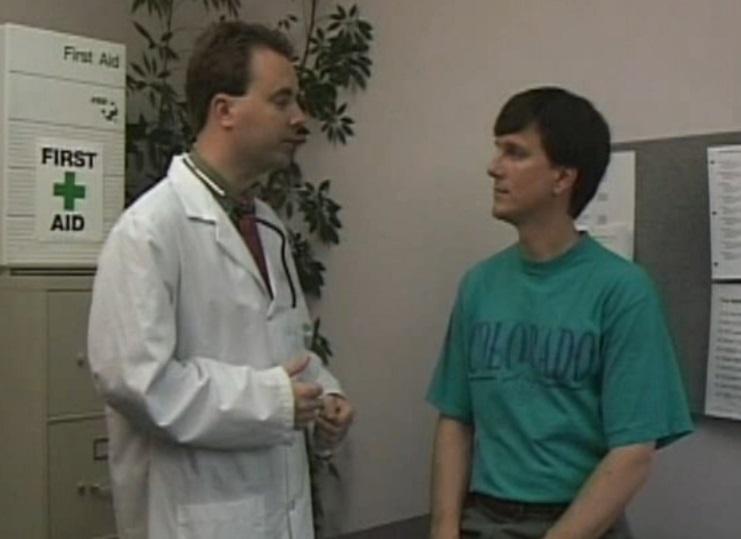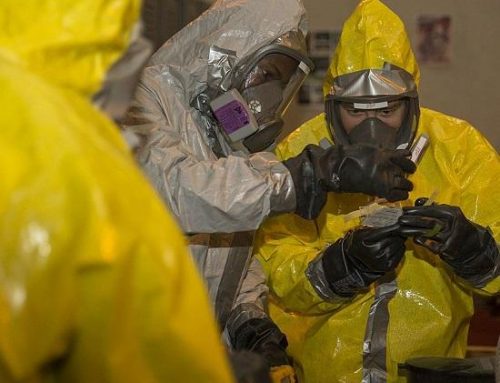As a business owner or supervisor, it’s important to prioritize the safety and health of your employees. One way to do this is by implementing a medical surveillance program as part of your company’s Hazardous Waste Operations and Emergency Response (HAZWOPER) plan. In this article, we’ll provide an overview of medical surveillance programs and offer some helpful tips for businesses looking to implement one.
What is a Medical Surveillance Program?
A medical surveillance program is a system of ongoing medical evaluations and monitoring for workers exposed to hazardous substances or conditions on the job. The purpose of a medical surveillance program is to identify and mitigate any potential health risks that may result from exposure to hazardous materials.
Who Needs a Medical Surveillance Program?
According to the Occupational Safety and Health Administration (OSHA), businesses are required to implement a medical surveillance program if they have employees who may be exposed to hazardous substances or conditions that could result in adverse health effects. This includes workers in a variety of industries, such as:
- Chemical manufacturing
- Environmental cleanup
- Waste management
- Oil and gas exploration
- Mining
- Construction
In addition to these industries, any business that generates hazardous waste or stores hazardous materials is also subject to the medical surveillance program requirements.
What is Included in a Medical Surveillance Program?
A medical surveillance program typically includes a series of medical evaluations and monitoring activities. These may include:
- Pre-placement medical evaluations: These evaluations assess an employee’s overall health and identify any preexisting conditions that may be exacerbated by exposure to hazardous materials.
- Periodic medical evaluations: These evaluations are conducted regularly, such as annually or every two years, to monitor an employee’s health and identify any potential health effects from exposure to hazardous materials.
- Follow-up medical evaluations: If an employee experiences an adverse health effect or is exposed to a high level of hazardous materials, a follow-up medical evaluation may be conducted to assess the extent of the impact and determine any necessary treatment.
- Recordkeeping: A medical surveillance program should include thorough recordkeeping of all medical evaluations and monitoring activities.
Tips for Implementing a Medical Surveillance Program
Here are 10 tips to help your business implement a successful medical surveillance program:
- Assess the need for a medical surveillance program: Determine whether your business requires a medical surveillance program based on the type of work your employees do and the potential for exposure to hazardous materials.
- Select a qualified healthcare professional: Choose a healthcare professional qualified to conduct the medical evaluations and monitoring activities included in your medical surveillance program.
- Develop a written program: Create a medical surveillance program that outlines the specific activities and procedures that will be followed.
- Communicate with employees: Make sure your employees are aware of the medical surveillance program and understand the purpose and importance of the evaluations and monitoring activities.
- Ensure confidentiality: Protect the confidentiality of employee medical records per relevant laws and regulations.
- Conduct pre-placement medical evaluations: Perform pre-placement medical evaluations for all new hires working with hazardous materials.
- Schedule periodic medical evaluations: Establish a schedule for periodic medical evaluations, such as annually or every two years, to ensure ongoing monitoring of employee health.
- Follow up on adverse health effects: If an employee experiences an adverse health effect or is exposed to a high level of hazardous materials, conduct a follow-up medical evaluation to assess the impact and determine any necessary treatment.
- Keep thorough records: Maintain thorough records of all medical evaluations and monitoring activities, including the results of the evaluations and any follow-up actions taken.
- Review and update the program as needed: Periodically review and update your medical surveillance program to ensure it is still effective and in compliance with any changes in relevant laws and regulations.
Conclusion
A medical surveillance program is an important part of a comprehensive HAZWOPER plan for businesses that deal with hazardous materials or conditions. By following the tips outlined above, you can help ensure the safety and health of your employees and protect your business from potential legal and financial liabilities.
Do you need HAZWOPER Online Training?
Try a free demonstration of HAZWOPER: Medical Surveillance Programs
OUTLINE OF MAJOR PROGRAM POINTS
The following outline summarizes the major points of information presented in our HAZWOPER: Medical Surveillance Programs course.
- When you work with hazardous materials, your job can be dangerous. You might have to deal with:
- Anxiety from a constant, underlying fear of being injured or killed on the job.
- Respiratory hazards.
- Heat stress from working under extreme temperatures, wearing personal protective equipment (PPE), or both.
- But of all the dangers you face, contamination can be the most serious.
- Not only can it seriously injure, even kill you… it isn’t just your problem alone.
- If you have been contaminated, you might contaminate others as well. Contamination is an “equal-opportunity” threat. You can spread hazardous material to your:
- Coworkers.
- Family.
- Friends.
- Pets.
- Of course, you would not deliberately spread hazardous materials.
- Depending on the type of chemicals that you are handling, you might be contaminated and not know it.
- You need special help to detect contaminants that you would not be aware of.
- That’s why OSHA’S “Hazardous Waste Operations and Emergency Response” (HAZWOPER) standard requires that you participate in a medical surveillance programs.
- But what is “medical surveillance”, and how does it help you?
- Medical surveillance is a series of medical examinations and tests that OSHA has mandated must be given to employees who work in hazardous materials environments.
- These examinations have two goals:
- To uncover potential threats to your health.
- To provide you with timely medical treatment, should it be necessary.
- According to the HAZWOPER regulations, you need medical surveillance if your job meets any of the following criteria.
- The first involves your risk of contamination.
- Every chemical has a “permissible exposure limit” (PEL) that has been set by OSHA.
- The PEL is the maximum recommended exposure level for a hazardous substance.
- If you will be exposed to a chemical at or above its PEL on 30 or more days during a period of twelve consecutive months, you must participate in a medical surveillance program.
- You must also undergo medical surveillance if:
- Your job requires you to wear a respirator on 30 or more days during a one year period.
- You are a member of a hazardous materials emergency response team.
- You have developed health problems as a result of being overexposed to a hazardous substance.
- Medical surveillance examinations fall into five categories:
- Pre-employment.
- Periodic.
- Termination or reassignment.
- Emergency.
- “Additional”.
- Pre-employment screening examinations provide basic information for monitoring your fitness over time.
- Think of it as a “snapshot” of the state of your health before you begin your job.
- For as long as you work with hazardous materials, your company doctor will compare the findings of your pre-employment screening to later exam results.
- Information from the screening is also used to determine your ability to perform basic job functions, such as wearing respirators and chemical-protective clothing.
- The purpose of periodic examinations is to:
- Monitor possible changes in the state of your health.
- Determine what levels of exposure to hazardous materials you might have received while doing your job.
- The results of these periodic examinations are compared to those of your pre-employment screening exam.
- In this way, any health problems that have developed can be caught early and dealt with.
- OSHA recommends that these periodic exams be conducted at least every year, and requires them at least once every two years.
- You will also be given a medical surveillance examination if you leave your job, or if you are reassigned to another site.
- If you have developed a medical problem that you didn’t have prior to working with the hazardous materials at your site, the results of this exam will allow the doctor to determine what caused the illness as well as what type of treatment you need to receive.
- If you need immediate medical help, and can’t get out of a contaminated area, you will be given an emergency examination where you are.
- For example, if you were overcome by fumes and lost consciousness, your company doctor would examine you right where you had fallen, in order to quickly determine what was wrong with you, and whether or not you should be moved.
- This emergency examination will also provide information for later treatment.
- Some substances are more of a threat than others. Because of this, “additional examinations”… over and above those required by OSHA… may be necessary if you are working with these types of materials.
- Whether you receive such examinations depends on the specific substances that you deal with at your site.
- Additional exams can include:
- Blood-pressure readings.
- Neurological exercises.
- Chest X-rays.
- Providing blood, urine or stool samples for analysis.
- No matter what type of medical surveillance examination you have, OSHA requires that every scheduled exam occur at a reasonable time and place.
- All job-related exams and tests will be carried out by a licensed physician.
- All exams will be paid for by your employer.
- Following each medical examination, your employer will be provided with the physician’s “written medical opinion.” This contains:
- The results of the exam.
- A description of any medical condition that would endanger your health if you worked around hazardous materials.
- A list of job functions that, based on your physical condition, could cause sickness or injury.
- An assessment of your ability to wear a respirator.
- A statement that you have been informed of the results of the exam.
- Your employer will not, however, be informed of any findings unrelated to your job.
- You will receive a copy of the doctor’s written opinion for your own records, including unrelated findings.
- In addition to medical examinations, recordkeeping is a vital part of medical surveillance.
- Keeping track of the health of everyone who may be exposed to hazardous materials would be impossible without it.
- OSHA requires that your medical record include:
- Your Social Security Number.
- Written opinions from your physician on the state of your health.
- Recommended limitations on your work activities.
- Information on treatments that you are receiving for any medical condition.
- Your record also contains:
- The results of all the medical examinations and tests that have been given to you since you began working with hazardous materials.
- A summary of any medical complaints that you might have made.
- Copies of any information that has been provided to your employer by your doctor.
- The tests and exams required for medical surveillance might seem inconvenient.
- But keeping tabs on the state of your health, and preventing others from becoming contaminated, is worth a small interruption every now and then!










